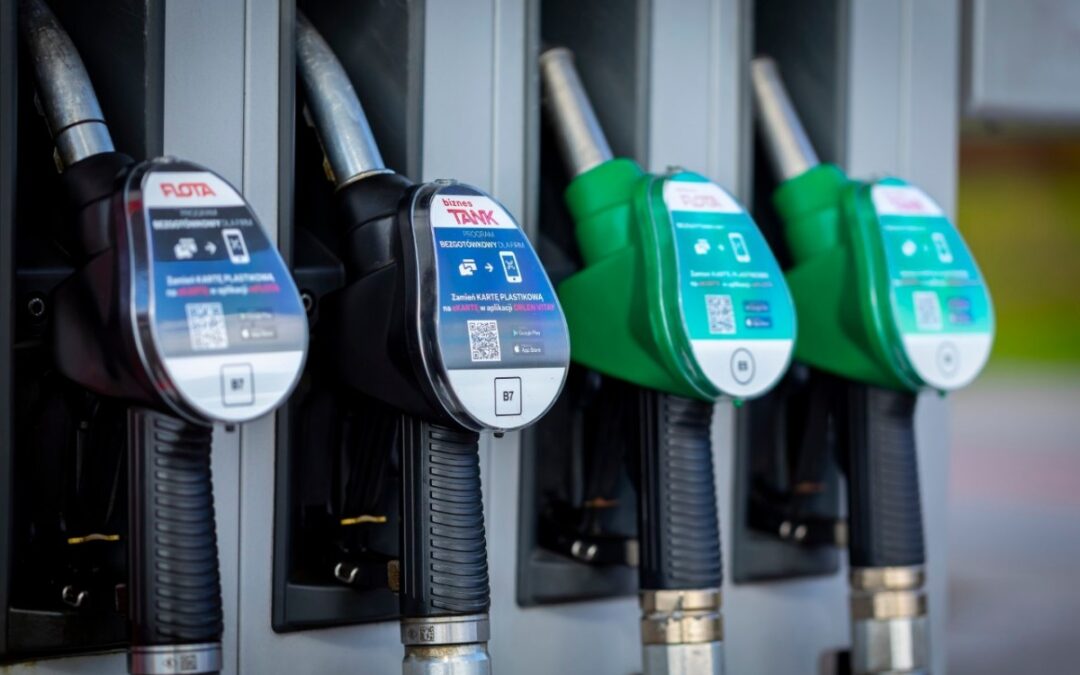Consumption of liquid fuels reached a record level of 37 million cubic metres in Poland last year, up 5% from 2021, shows a new report by the Polish Organisation of Oil Industry and Trade (POPiHN).
The figures come despite soaring energy prices, which saw the market value of fuels sold in Poland last year rise almost 37%, from 142 billion zloty to 194 billion.
Increased consumption is likely to have been driven in part by the war in neighbouring Ukraine – with Poland becoming the main hub for those fleeing the conflict and for the transport of goods into Ukraine – as well as the recovery of the aviation industry following the pandemic.
Indeed, jet fuel consumption shot up by more than 70% year-on-year to 1.24 million cubic metres. Meanwhile, petrol consumption increased by 5% to 7.15 million cubic metres, diesel by 3% to 22.66 million cubic metres, and LPG by 8% to 5.13 million cubic metres.
According to Krzysztof Romaniuk, director of the fuel market analysis department at POPiHN, several factors contributed to this increase.
Last year, millions of people fleeing the war in Ukraine crossed the Polish border, bringing with them a large number of cars. Later movements related to the relocation of refugees also increased demand.
Additionally, at the end of the year drivers flocked to the fuel stations again ahead for the return of the VAT on fuels, which had been temporarily suspended as part of the government’s anti-inflation measures.
Because of these tax cuts, the sector contributed 11 billion zloty less to the state’s budget compared to a year earlier, paying over the year a total of 63 billion zloty.
A public transport operator has called for an antitrust investigation into the "thieving monopoly" of state oil giant Orlen, saying it inflates prices
Opposition parties have issued similar demands, but the PM argues that Orlen has helped keep prices down https://t.co/Xvonrfkyz7
— Notes from Poland 🇵🇱 (@notesfrompoland) January 3, 2023
Oil throughput at Polish refineries was 27 million tonnes, with 41.9% of it coming from Russia. That was a significant drop from the proportion of 61% recorded the year before.
After Russia’s invasion of Ukraine, Poland pledged to end all Russian energy imports by the end of 2022. That was achieved for coal and gas, but in January 10% of Poland’s oil still came from Russia due to a long-term contract. That situation was brought to an end when Russia itself ended supplies in February.
In 2022, 29% of Poland’s oil came from Saudi Arabia, with which state oil giant Orlen signed a long-term deal, and 12.3% from Norway.
Poland has not abandoned Russian oil entirely, as it declared it would, but instead the Kremlin turned the taps off itself.
Securing energy independence from Russia, however, is not the end but rather the beginning of new challenges, writes @wjakobik https://t.co/2mvk9cmfGA
— Notes from Poland 🇵🇱 (@notesfrompoland) March 10, 2023
Imports of fuels also rose 9% year-on-year to 13.7 million cubic metres. They accounted for 37% of total consumption. Most petrol was imported from Germany (51%), followed by Slovakia (16%), Lithuania (11%) and the Netherlands (11%). Diesel came primarily from Russia (37%), Germany (25%) and the Netherlands (11%).
Fuel exports from Poland also increased last year, reaching 2.64 million cubic metres, up by 43% compared to 2021. According to Romaniuk, the main export market for this increase was Ukraine, “due to the war situation”.
He noted that, while demand is still expected to grow over the next 2-3 years, the sector will have to grapple with the green transition, including the EU ban on the sale of combustion cars as of 2035. Poland was the only EU member state to oppose those new rules when they were agreed this week.
The EU has agreed to ban the sale of new petrol and diesel cars from 2035 despite opposition from Poland, which was the only member state to vote against the proposal https://t.co/AfCxgKZcle
— Notes from Poland 🇵🇱 (@notesfrompoland) March 28, 2023
Main image credit: Orlen (press materials)

Alicja Ptak is deputy editor-in-chief of Notes from Poland and a multimedia journalist. She has written for Clean Energy Wire and The Times, and she hosts her own podcast, The Warsaw Wire, on Poland’s economy and energy sector. She previously worked for Reuters.





















